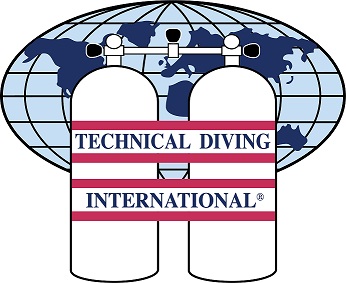| Home | Courses | Diving | Shop | Links | Contact Us |

.
|  |
Decompression Theory: Robert Workman and Prof A Buhlmann |
It wasn’t until the 1960s that any fundamental changes to the model were considered. Robert D. Workman of the U.S. Navy Experimental Diving Unit (NEDU) was a medical doctor with the rank of Captain in the Medical Corps. It had been observed that tables based on Haldane’s work and subsequent refinements were still inadequate when it came to longer and deeper dives. Workman undertook a review of the basis of the model as well as subsequent research performed by the US Navy.
Workman revised Haldane’s model to take into account the fact that each of the various tissue compartments can tolerate a different amount of overpressurisation and that this level changes with depth. He introduced the term "M-value" to describe the amount of overpresurization each compartment could tolerate at any depth. Workman also added three further slow tissue compartments with 160, 200 and 240 minutes half times.
Rather than present his calculations as a completed table Workman presented his conclusions in the form of an equation which could be used to calculate the results for any depth. He also made the observation that "a linear projection of M-values is useful for computer programming as well" and so was one of the first people to identify the role that computers would come to play in the calculation of decompression tables.
Bühlmann specialized in the patho-physiology of the respiratory and circulatory systems. He took a particular interest in respiratory physiology under extreme atmospheric conditions, of the kind encountered at high altitudes or whilst diving. For the majority of his career his main interest was professional deep diving. In 1959 he supervised successful experimental dives to a depth of 120 metres in Lake Zurich using Trimix gas mixtures and changes of mixture during decompression. In the next two years Professor Bühlmann and Hannes Keller demonstrated the practical results of their research with simulated dives to 300 metres. In the following years Bühlmann worked with the US Navy who funded a series of experimental extended dives in the range of 150 to 300 metres. Bühlmann also worked with Shell Oil who were interested in the practical implications of his research as they could be applied to commercial dives involved with undersea oil fields.
Much of Bühlmann’s research was intended to determine the longest half times compartments for Nitrogen and Helium. As a result of this work Bühlmann extended the number of half time compartments to 16. He also investigated the decompression implications of diving at altitude. A number of severe cases of DCS showed that high altitude diving was very dangerous when using standard ‘sea level’ decompression tables. Following a series of simulated high altitude dives decompression tables that could be used at a range of altitudes were published. Bühlmann’s method for decompression calculations was similar to the one that Workman had proposed. This included M-values which expressed a linear relationship between ambient pressure and the maximum inert gas pressure in the tissue compartments. The major difference between the two approaches was that Workman's M-values were based on depth pressure (i.e. diving from sea level) and Bühlmann's M-values were based on absolute pressure (i.e. for diving at altitude).
In 1983 he published the results of his years of research in the first edition (in German) of a successful book entitled Decompression -Decompression Sickness. An English translation of the book was published in 1984. This book was the first nearly complete reference on making decompression calculations that was widely-available to the diving public. As a result, the "Bühlmann algorithm" was adopted by many of the manufacturers of wrist mounted, in-water decompression computers as well as programmers of desktop computer programs.
Three more editions of the book were published in German in 1990, 1993, and 1995 with the revised title Tauchmedizin or "Diving Medicine." An English translation of the 4th Edition of the book (1995) has still not been published 10 years later.
Bühlmann’s model was also used to generate tables which became the standard diving tables for a number of sports diving associations. Max Hahn used Bühlmann's model to develop tables Deco ’92 Tables which were adopted by the Swiss Underwater Sport Association and the Association of German Sports Divers. In the UK Bob Cole developed a set of tables for the UK’s Sub-Aqua Association. In 1987, working in conjunction with Bühlmann, he developed the SAA Bühlmann System which is made up of the tables themselves together with a set of rules and procedures for using them safely.
Prof Bühlmann died suddenly of heart failure in 1994 at the age of 70. Although he was not himself a diver he made a great impact on the science of decompression. He constantly tried to balance the creation of tables with the lowest possible risk with avoiding unnecessarily long decompression. His work gained worldwide recognition and in 1993 he received an award from the Divers Alert Network (DAN) for his life’s work in the service of decompression science.
Please see the previous article for more information on the work of Paul Bert and John Scott Haldane.
For more information on half times and tissue compartments then please see the next article.